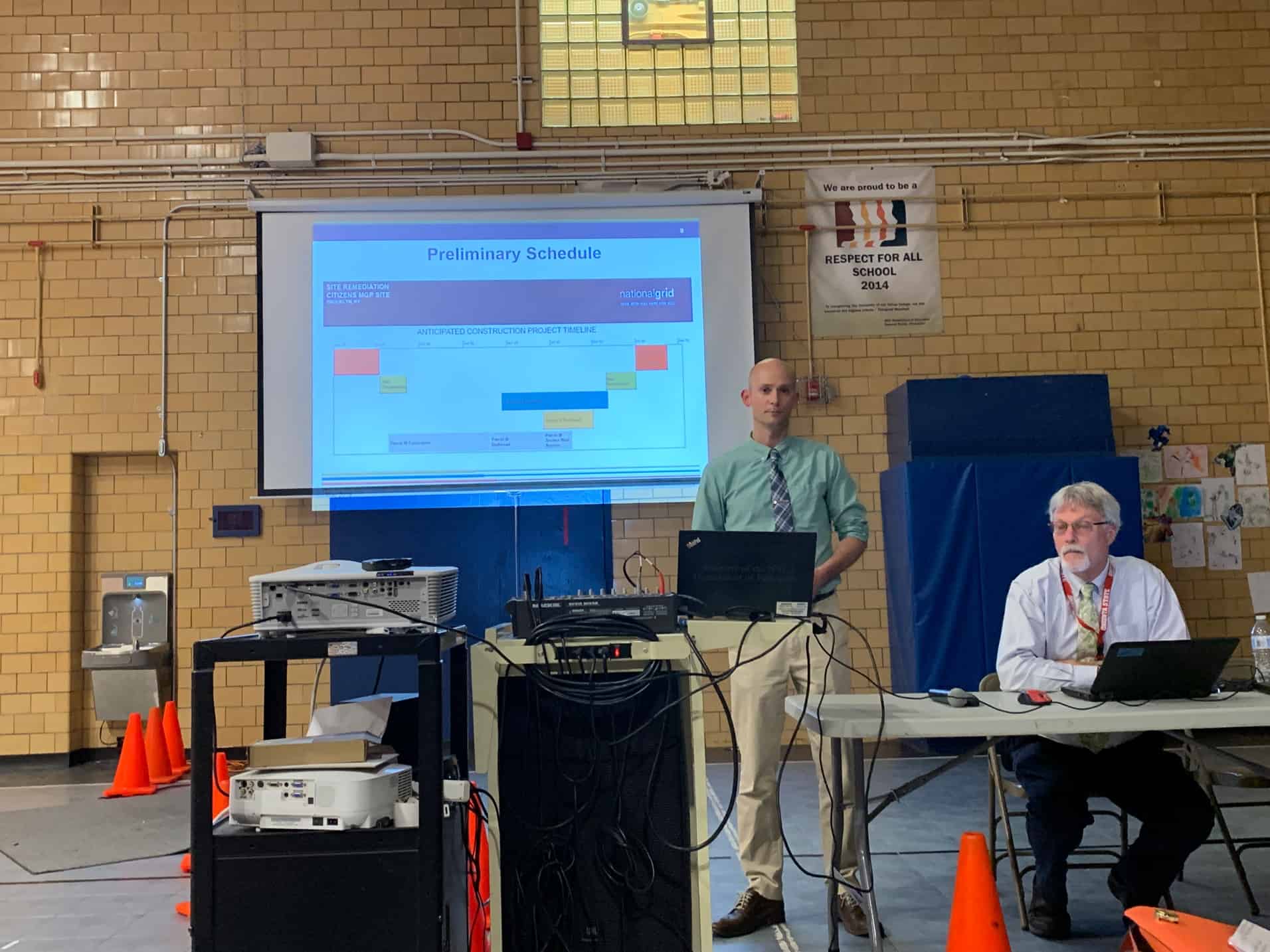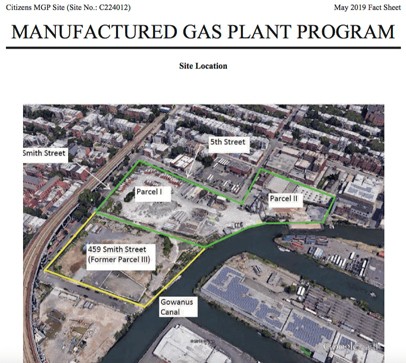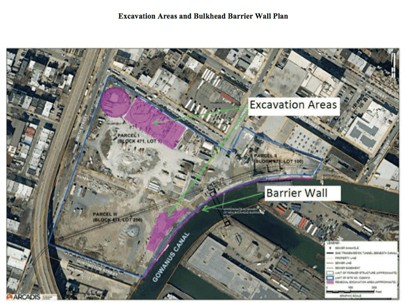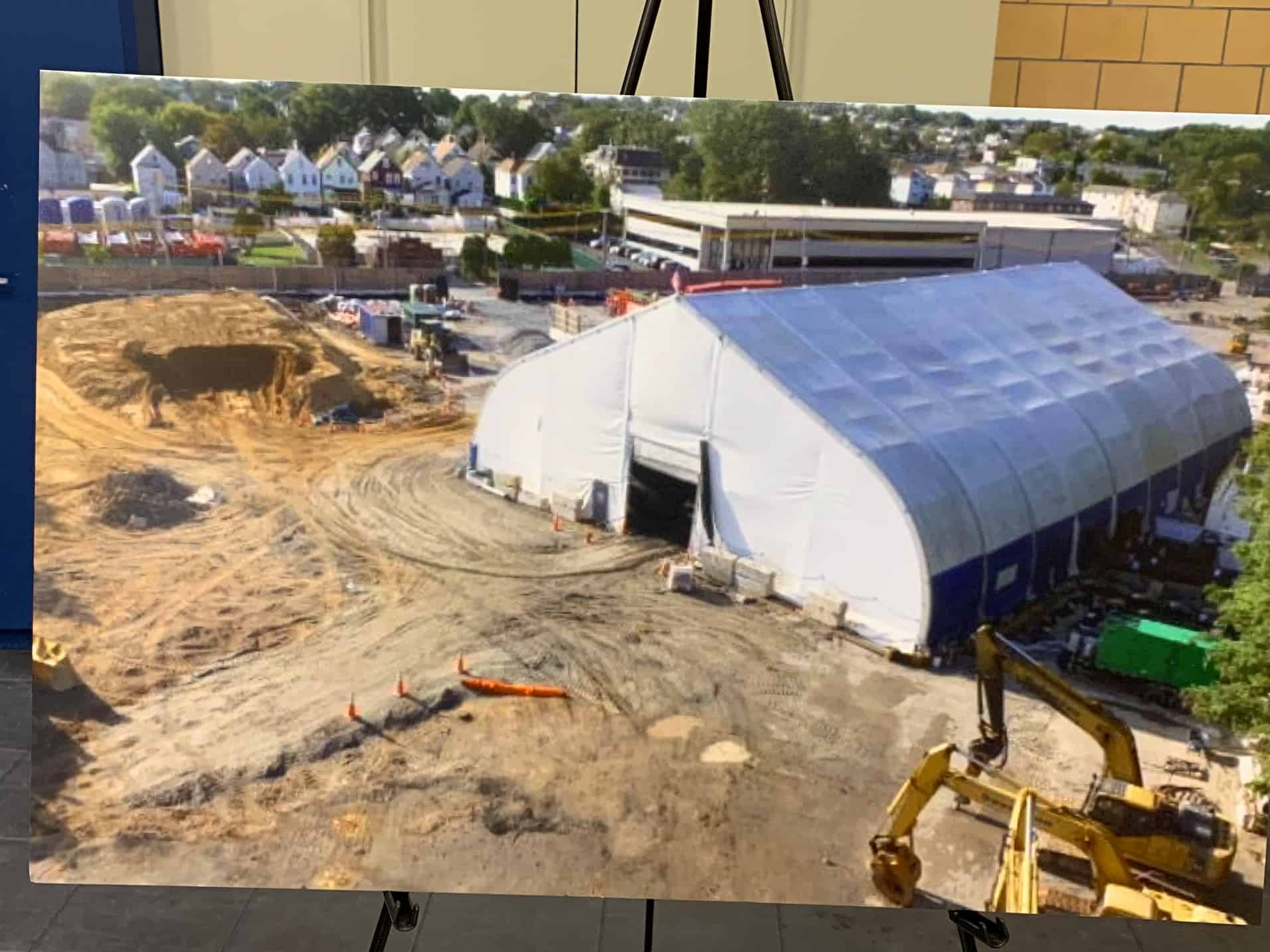
It’s official – preparation is underway, beginning July 8, for remedial action that’ll address contamination related to the Citizens former Manufactured Gas Plant (MGP) site under New York’s MGP Program. The site is six acres in size and is composed of two adjoining parcels owned by the City. The site formerly included a third parcel, located at 459 Smith Street, which was recently removed from the Citizens MGP Site and re-entered in the Brownfield Cleanup Program as a stand-alone site. Currently, the site is vacant; however, a large pile of concrete exists from being occupied by a concrete facility.
The goal of the cleanup action is to achieve cleanup levels that protect public health and the environment. National Grid is performing the cleanup activities, with oversight provided by the New York State Department of Environmental Conservation (NYSDEC). National Grid is responsible for the site’s remediation because a predecessor company operated the site when contamination occurred.
As per DEC’s May 2019 fact sheet, the key components of the remedy are:
- Excavation and off-site disposal of approximately 42,000 cubic yards of impacted soil
- Demolition of building foundations, underground facilities and former MGP structure
- Backfilling of excavated areas with soil that meets the soil cleanup objectives (SCOs)
- Construction of approximately 880 feet of steel bulkhead barrier wall along the Gowanus Canal
- Construction of a cover system consisting of a minimum of two feet of soil in the excavation area
- Installation of coal tar recovery wells to collect and remove contamination
- On-site treatment of water generated during remedial activities to meet discharge requirements
- Development of a Site Management Plan for the long-term maintenance of the remedy
- Recording of an Environmental Easement for the institutional and engineering controls needed at the site.
PRELIMINARY SCHEDULE
National Grid is mobilizing this month, setting up of trailers and prepping for construction work within the footprint of planned remedial excavations. Excavation of Parcel 3 – aka the first phase of remediation – will begin at the end of July or early August, and is expected to take six months to complete. Then construction of a barrier wall along the Gowanus Canal, to support the Gowanus Canal dredge work and to reduce migration of impacts from the site, will occur. Excavation of Parcel 1 will begin in Spring 2020. The target completion date is January 2021.
After cleanup activities are completed, National Grid will prepare a Final Engineering Report (FER). The FER will describe the cleanup activities that were completed and certify that cleanup requirements have been achieved or will be achieved.
MEETING RUNDOWN

NYSDEC held a public meeting on June 13 to talk about the cleanup activities and address any locals’ questions.
NYSDEC Project Manager John Miller said the remedial design that was finalized last year actually significantly expands on the original 2007 decision document by expanding on the remedy to remove more contamination – now going between 20 and 25 feet deep into the ground. He also explained there will likely be significant noise and vibration for sheet pile installation during the excavations, and the agency will do extensive monitoring for noise levels within a certain range. A site-specific health and safety plan (HASP) and a Community Air Monitoring Plan (CAMP) will be implemented during the remediation activities. The HASP and CAMP establish procedures to protect on-site workers and residents and includes required air monitoring as well as dust and odor suppression measures. Air monitoring for dust particles will be in place, measuring the concentrations in real-time to make sure community members are protected.
The biggest control in place is a temporary fabric structure, similar to a tent, under which all excavation work will be done, so odors are contained and soil can be staged and loaded onto trucks. Trucks will be sprayed down with water for proper decontamination of dirt, dust and debris. Miller also said designated truck routes will be implemented to minimize impacts on local residents, but noted there will be a fair amount of trucks moving throughout the neighborhood. Clean soil that meets cleanup criteria of the Brownfield Program will replace the contaminated soil.
PUBLIC Q&A

A few members in attendance asked Miller and Dawn Hettrick (from NYS Department of Health) if a health study will be conducted afterward when remediation is complete. The answer was no.
“Once the site is remediated, the waste will either be removed from the site or it’ll be at a depth where people won’t be exposed to it,” Hettrick explained. “These types of contaminants don’t migrate very quickly and [are] not fairly volatile.”
The agency’s not inclined to do a health study afterward, according to Hettrick, because there’s no health exposure – which is assessed through different exposure rates of ingestion through eating, drinking, dermal contact, or inhalation, for instance – and the remaining contaminated soil will be well below the surface. She reassured the audience that there would be ongoing monitoring (to be determined once the remedy’s in place).
Author Joseph Alexiou asked if the agencies felt comfortable to say that there’s almost no possibility that this project could go terribly wrong, once capping is completed and a new building is constructed on the site. Hettrick said if they think there’s going to be sheet piling, there are provisions to do soil vapor sampling as part of the Site Management Plan (to see whether or not vapors could get into a building afterward).
“The Site Management Plan looks at a lot of things. Any future excavation, and how that needs to be done, deals with any monitoring that needs to be done and any follow-up sampling that might need to be done, depending on what the planned future use is,” she explained.
NYSDEC and National Grid will work with the Environmental Protection Agency throughout this process, and will have a series of signs along the fences with a hotline listed for any concerns. For more information, visit citizensmgpsite.com.
Top photo taken at meeting by DeGregorio
Author
-

George Fiala has worked in radio, newspapers and direct marketing his whole life, except for when he was a vendor at Shea Stadium, pizza and cheesesteak maker in Lancaster, PA, and an occasional comic book dealer. He studied English and drinking in college, international relations at the New School, and in his spare time plays drums and fixes pinball machines.
View all posts
George Fiala has worked in radio, newspapers and direct marketing his whole life, except for when he was a vendor at Shea Stadium, pizza and cheesesteak maker in Lancaster, PA, and an occasional comic book dealer. He studied English and drinking in college, international relations at the New School, and in his spare time plays drums and fixes pinball machines.










